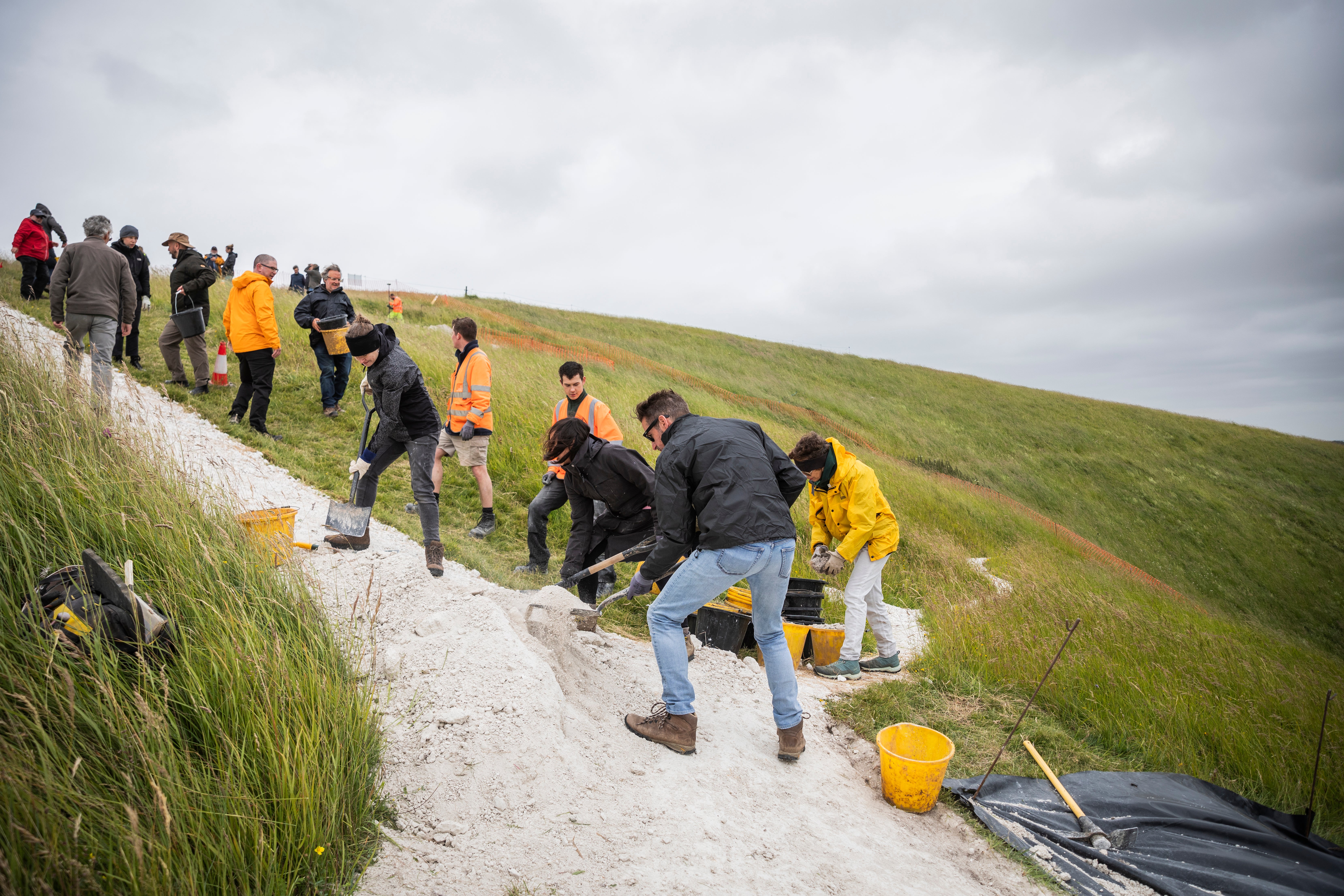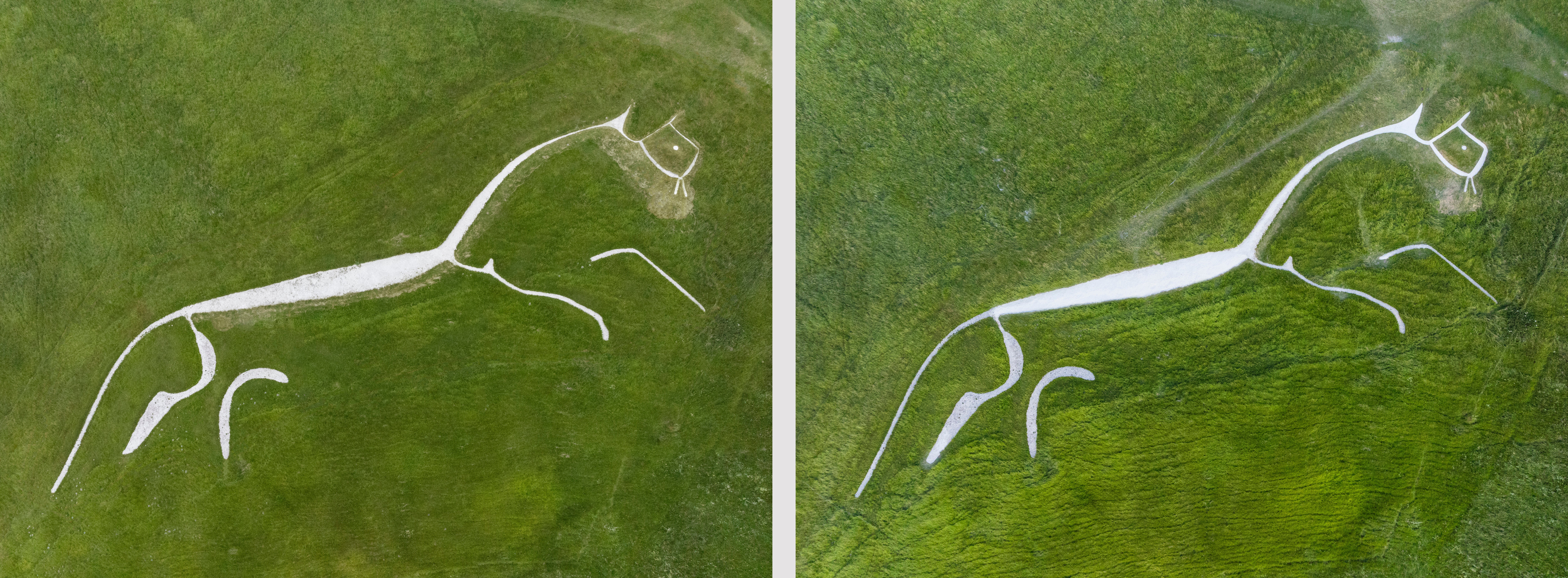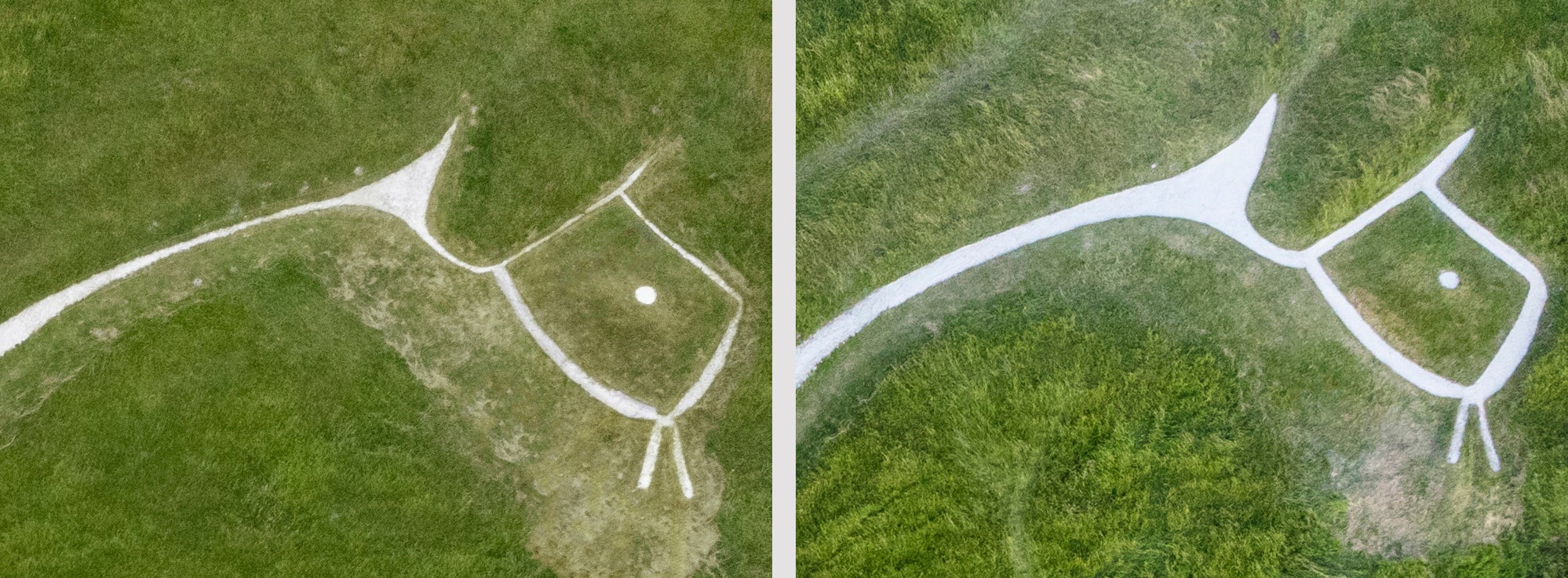Britain’s oldest chalk figure has had a facelift in bid to solve origin mystery
The head and neck area of the 3,000-year-old figure had narrowed to less than half its typical width

Your support helps us to tell the story
From reproductive rights to climate change to Big Tech, The Independent is on the ground when the story is developing. Whether it's investigating the financials of Elon Musk's pro-Trump PAC or producing our latest documentary, 'The A Word', which shines a light on the American women fighting for reproductive rights, we know how important it is to parse out the facts from the messaging.
At such a critical moment in US history, we need reporters on the ground. Your donation allows us to keep sending journalists to speak to both sides of the story.
The Independent is trusted by Americans across the entire political spectrum. And unlike many other quality news outlets, we choose not to lock Americans out of our reporting and analysis with paywalls. We believe quality journalism should be available to everyone, paid for by those who can afford it.
Your support makes all the difference.Archaeologists have given Britain’s 3,000-year-old artwork a facelift.
Work has been carried out to restore the head and neck profile of the Uffington White Horse in Oxfordshire.
Archaeological work last year, including examination of previous surveys, showed that parts of the ancient chalk horse carved into the hillside have narrowed over time, as grass has encroached and topsoil slipped.
The head and neck area of the 3,000-year-old figure had narrowed to less than half its typical width.
Now archaeologists from the National Trust and Oxford Archaeology have returned the 364ft (111m) long horse, which dates from the Bronze Age, to its typical profile, by carefully cutting the encroaching turf back to the estimated original edge and re-distributing some of the top layer of chalk on the figure.
During the work, soil samples from the lowest layers of the figure have also been taken to see if they can be used to accurately date its creation.

Previous samples taken in the 1990s revealed the horse to be Britain’s oldest chalk figure, but techniques to date archaeological remains have improved so there is an opportunity to refine the date further, the team said.
They are using “optically stimulated luminescence” (OSL) dating – which analyses crystalline materials such as quartz or feldspar to determine the last time they were exposed to sunlight – and results are expected later this year.
National Trust archaeologist Adrian Cox said: “The Uffington White Horse is set in a dramatic landscape, shaped by nature and by people through time.
“It is a hugely important chalk figure, partly because it is the oldest scientifically dated example in Britain, dating back to the late Bronze Age.
“It is also an intriguing figure as we don’t know for certain its original purpose. It could have been a way of marking territory or as a tribal symbol.
“What we do know is that through the efforts of generations of local people, the horse has been cared for, allowing it to survive for thousands of years to become an iconic feature of this landscape.”

Oxford Archaeology project manager Mark Dodd said it was a huge privilege to work on such an “iconic landmark”.
“Now the hard work is done, and we can see elements of the monument restored to its former glory, we will be eagerly awaiting the results of research to see what new information this will bring to light,” he said.
English Heritage senior properties curator Win Scutt said: “As a Scheduled Monument, the Uffington White Horse is under the guardianship of English Heritage.
“We’re delighted that work is being done to better understand this iconic place while it’s returned to its former shape and size.”
Join our commenting forum
Join thought-provoking conversations, follow other Independent readers and see their replies
Comments